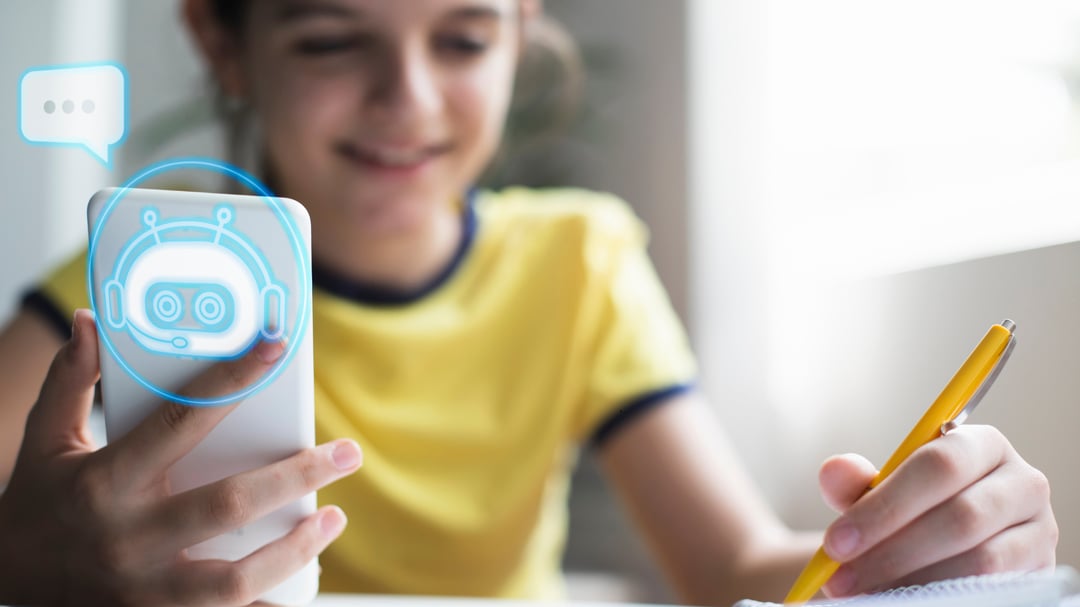Good educators strive to help their students reach academic success: great educators strive to help their students build a growth mindset. They know a growth mindset is their students’ best chance for long-term success and overall well-being.
A growth mindset - the belief that abilities and intelligence can be developed through dedication and hard work - is essential for students to reach their potential.
Positive reinforcement and encouragement are (hopefully) standard practice in every classroom and every lesson. But does this alone produce a growth mindset? Is it enough to tell our students to “try harder” and “keep going”?
While a good start, there is more to cultivating a true growth mindset, and students positioned for the lifelong pursuit of learning and growth. A more robust view of growth mindset includes not just the mind, but of the brain. Integrating brain-based learning principles into the classroom expands the outcomes achieved and the impact made.
This blog presents how a neuroscientific approach gives educators the tools to build students’ capacity to acquire academic skills, and cultivate their students’ growth mindset, resilience, grit, and even a love for learning.
Learn more about field of Brain Based Learning in our Beginners Guide to Brain-Based Learning.
What is a Growth Mindset for Students?
A growth mindset is the belief that abilities and intelligence can be developed through effort and persistence. This concept - popularized by psychologist Carol Dweck - contrasts with a fixed mindset, where individuals believe their abilities are static and unchangeable.
Students with a growth mindset are more likely to embrace challenges, learn from criticism, and persist in the face of setbacks - all of which contribute to academic and personal success.
In the classroom, a growth mindset encourages students to view learning as a journey rather than a destination. It helps them understand that struggle and failure are natural parts of the learning process, not indicators of their limitations. This mindset is crucial for developing resilience, a love for learning, and the willingness to put in the necessary effort to achieve their goals.
What is Neuroplasticity?
Neuroplasticity, often referred to as brain plasticity, is the brain's extraordinary ability to reorganize itself by forming new neural connections throughout life. This adaptability is not limited to early childhood; it continues into adulthood, enabling us to learn new skills, recover from injuries, and adapt to new environments.
In the context of education, neuroplasticity means that students can strengthen the processes that underpin all learning.
Everything a student does throughout the day - from solving math problems to interacting with their peers - engages the brain's cognitive functions. Whether they are related to attention, memory, or problem-solving, these cognitive functions work together like instruments in an orchestra, each playing a specific role in the overall process of learning and development.
Through positive and targeted neuroplasticity, significant improvements can be made to these processes, leading to improved capacity to learn and perform, and even addressing learning difficulties.
This replaces the outdated notion that the brain's structure is fixed and that learning potential is fixed. Instead, it presents a new option for all learners - optimizing their brains’ ability for continuous growth and improvement.
When harnessed correctly, neuroplastic programs can enable individuals to:
- Strengthen their brain
- Enhance their cognitive capabilities
- Improve their academic and professional performance
- More easily learn new things
- Improve their mental health
- Overcome learning difficulties
- Strengthen areas of weakness within the brain
For more detailed information about neuroplasticity and how it can be harnessed to strengthen the brain, read our Ultimate Guide to Neuroplasticity.
What’s the Connection Between Neuroplasticity and a Growth Mindset?
The awareness and application of the brain’s capacity to change, is the seed of growth mindset.
Firstly, students who understand their brains are capable of improvement can see their own potential as something they can actively shape, rather than possessing a set of limitations they must accept.
Next, students who participate in neuroplastic programs have made measurable gains in the very processes that underlie a growth mindset: attention, reflection, critical thinking, working memory, and cognitive flexibility.
What’s more, these approaches can have growth mindset opportunities embedded in the activities themselves. Simply engaging in well designed cognitive exercises can build students’ resilience, perseverance, and ‘can do’ attitude.
This is where the connection between neuroplasticity and a growth mindset becomes vital.
When students engage in cognitive exercises that harness the power of neuroplasticity, they experience first-hand the brain's ability to improve and grow.
So, How can Teachers Harness the Power of Neuroplasticity to Build Students’ Growth Mindset?
Let’s examine how the core design of a cognitive program within the classroom can directly build growth mindset. Some of Arrowsmith’s key principles include:
1. Feedback
When feedback is provided immediately, students understand their progress, correct errors, and can make improvements. This promotes a learning-oriented attitude rather than a fixed view of abilities. Feedback that involves positive reinforcement and constructive criticism also builds resilience and encouraging persistence, reinforcing the understanding that abilities can be developed through effort.
2. Motivation
By aligning tasks with meaningful goals, students engage in cognitive activities because of their own desire to achieve; they see challenges as opportunities rather than threats. Goals that are achievable yet challenging foster a sense of accomplishment and drive continued effort, further supporting the growth mindset.
3. Progressive Challenge
Introducing progressively more challenging tasks helps individuals stretch their abilities and expand their cognitive growth. Students soon recognize that growth comes from pushing beyond their current capabilities. Gradually increasing difficulty also ensures that students are consistently working at the edge of their current abilities, promoting the “not yet, but possible” mindset.
4. Effortful Processing
Tasks that require significant cognitive effort enhance neural connections and strengthen brain processes. Effort is a key component of learning and growth. This effort also fosters perseverance - the experience of persistence leading to mastery.
5. Novelty and Complexity
Introducing new and varied tasks keeps the brain engaged and stimulates curiosity. This can build a mindset that values exploration and sees learning as an ongoing process. Exposure to complex opportunities develops problem-solving and resilience, giving students the view that challenges can be faced with optimism.
Read more about how these concepts are built into every aspect of the Arrowsmith approach: 5 Key Principles of Neuroplasticity.
Can All Students Build a Growth Mindset Through Neuroplasticity?
Every individual has the potential to strengthen their brain, build their growth mindset and enhance their performance within their school life, and beyond.
Students who are high achievers, meeting expectations, underperforming, and those at risk can all develop their cognitive capacities, their outcomes, and their perception of themselves.
Furthermore, learning disabilities can be overcome. Students diagnosed with learning disabilities such as Dyslexia, Dysgraphia, Dyscalculia, or attention disorders like ADHD have had symptoms related to these diagnoses lessened or eliminated. Traditionally, these disabilities are seen as lifelong challenges, but advancements in neuroscience offer a different future.
Across the wide spectrum of learning - students can advance their independent and lifelong learning capacity through targeted cognitive exercise.
Building Growth Mindset in Schools
Engaging in cognitive programming that leverages neuroplasticity, means students experience real, measurable changes in their learning abilities.
As educators engage in a school year of learning and growth - for themselves and their students - keep these concepts in mind:
- A strong brain embraces challenges, values effort, persists through difficulties, and navigates all of life’s complexities.
- Education can be instrumental in shaping cognitive development—students and teachers can actively contribute and shape the brain’s continual growth.
- Neuroplasticity programs that improve cognitive processes can foster a growth mindset by fundamentally reshaping how individuals learn and approach challenges.
Most importantly, students develop a joy for learning - a hallmark of a growth mindset - knowing that their abilities - and brains - are not fixed but can be continually developed through effort and perseverance.
Are you interested in learning more about how you can foster a growth mindset for your students through the power of neuroplasticity? Learn more about how The Arrowsmith Program works for educators.
Tags:
Neuroplasticity
September 17, 2024



